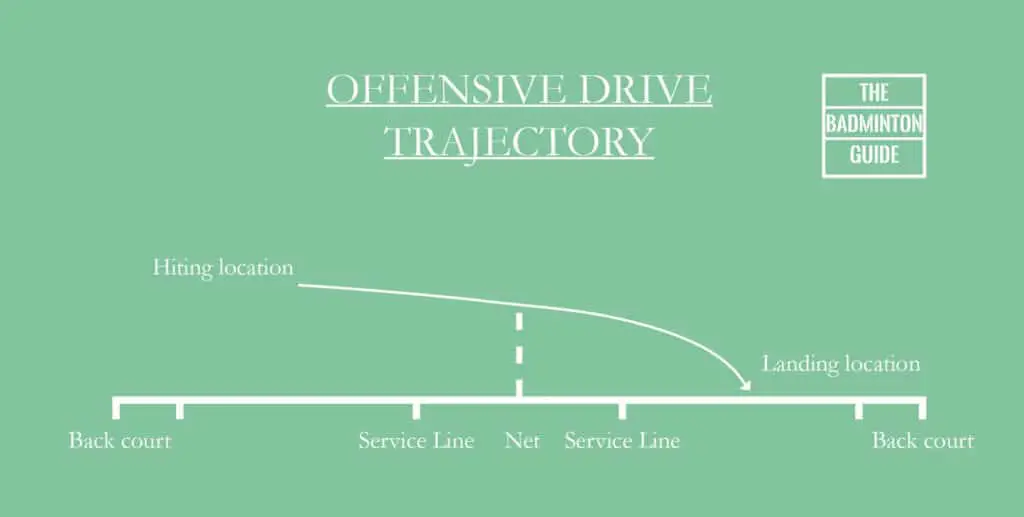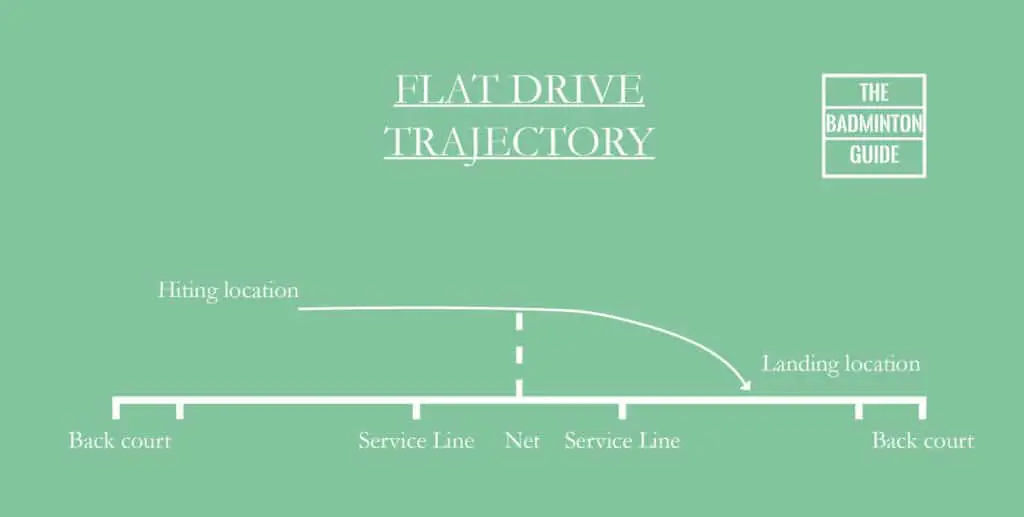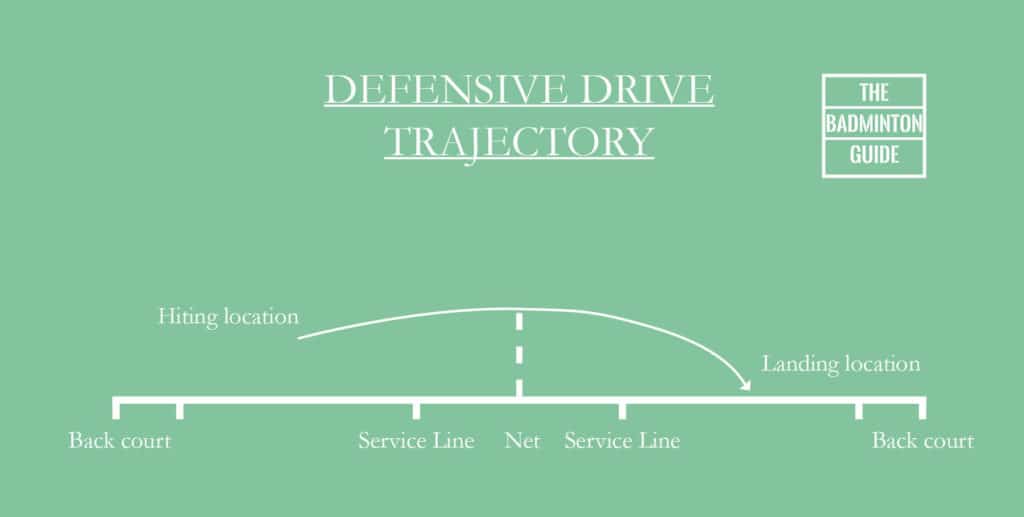If you are a beginner, it can be difficult to know when you should be using any of the shots from badminton. For this reason, I have created this post where I explain when is a forehand drive used in badminton.
A forehand drive is used in badminton mostly in doubles games, in an attempt to keep your opponent from gaining the initiative of the rally and gain it yourself instead. In singles, it is rarely used because it is a risky movement and can backfire if you are not careful.
Now that we got the short answer out of the way, let’s dig deep and understand all the different circumstances when a forehand drive is used in badminton.
Do you want to improve your badminton game? Then be sure to sign up for Badminton Famly+ by clicking here. Founded by former World Champion Thomas Laybourn, Badminton Famly+ is the best online training platform for badminton.
When is a forehand drive used in badminton? The in-depth answer
As I mentioned before, the forehand drive is a shot mostly used in doubles. You can use it whenever you have a shot in the middle of the court that is not high enough for you to smash it neither low enough that you will hit it very close to the floor. Let’s see now when it is used both in singles and doubles.
When is a forehand drive used in singles?
The forehand drive (or any kind of drive for that matter) is not a very common shot in singles. Since you need to cover all the court by yourself, drive shots and the speed that comes with them are high risk in singles.
Therefore, they are used in special circumstances, only when a player sees a big advantage and wants to push the opponent.
Another circumstance where it could be used is if the player in question is a doubles specialist that is also playing singles. If his or her drive play is very good, he could risk using this shot more often to try to put pressure on the opponent.
Apart from these circumstances, forehand drives are not very used in singles. In fact, what you will see quite often is one player speeding up the play with a drive and the opponent slowing it down by sending the shuttle to the back of the court or to the net.
When is a forehand drive used in doubles?
Contrary to what happens in singles, the forehand drive is widely used in doubles. This is because in doubles there are two people on each court so the area to cover is smaller. In this case, points are won mostly by attacking and finalizing a point strongly, not by moving your opponent around until he or she cannot reach the shuttle.
Because of that, having the initiative of the rally is paramount. So players go to great lengths to not lose the initiative. As a result, forehand drives are used because it allows you to return a shot to the middle ground where neither you nor your opponents have the initiative.
You could say it is an in-between phase on the rallies, where each couple is trying to find a crack on one of the shots of their opponents so they can attack it and start having the initiative.
So, the forehand drive is used in doubles whenever you have the shuttle in the middle of the court, not high enough that you could attack it but not low enough that a drive is not an option. In this circumstance, a drive is a good solution if you do not want to give away the initiative of the point.
When should you use each type of forehand drive?
So, now that we know when is a forehand drive used in badminton, it is time to look into when should you use each type of drive.
Before we move onto it though, let’s first clarify which types of forehand drive there are. They are three and they are as follows:
- Offensive forehand drive
- Flat forehand drive
- Defensive forehand drive
If you are not familiar with them and want to know a bit more about what they are, be sure to check our badminton drive post. In this post, I explain what are the different types of drives and how to perform them.
Now, let’s have a look at when you should use each of them.
When should you use an offensive forehand drive?
In general, the type of forehand drive you can use will depend mostly on how high you can hit the shuttle. The higher the shuttle, the more offensive the shot.
For the offensive forehand drive, you should be using it when you can hit the shuttle above your head height, in a position where you can give it a downwards trajectory.
The height is more or less the result of when your armpit is forming a 90 degrees angle and your elbow another 90 degrees angle. You can see below an image showing the approximate hitting location and the trajectory.

When should you use a flat forehand drive?
You use a flat forehand drive whenever you hit the shuttle at your head’s height. In this instance, because of the height of the shuttle, you cannot give the shuttle any downwards direction. Otherwise, it would hit the net.
Therefore, the focus of the shot should be on making it pass as close to the net top as possible so that your opponent cannot take advantage of it. You can see the image below where the trajectory is shown.
You can use this shot, for example, when your partner has served and you receive the return shot in middle court. It is a good way to keep the game in the in-between phase and not hand in the initiative of the rally.

When should you use a defensive forehand drive?
You should use a defensive drive whenever the shuttle has gone below the net height, but you can still give it a fairly straight trajectory with some strength.
In this case, the aim of the shot is also to pass it as close to the net as possible so that your opponents cannot attack it. I would say that, in this case, the precision is even more important because the shuttle will be traveling a bit slower than in the other two cases. Therefore, you need to make sure it stays low.
In the image below you can see what the perfect trajectory for this type of shot would look like.
You can use this shot if you reach the shuttle a bit forced but are still in a good position to try and not give the initiative of the point to your opponents. Bear in mind though that you need to adjust it to the net as much as possible. Otherwise, it becomes a very easy shot to attack.

Final words
And with this, we have arrived at the end of this post. During this post, we have learned when a forehand drive is used in badminton, both in singles and in doubles. We have also learned which type of forehand drive you should be using depending on the height at which you can hit the shuttle. If you still have questions about it, please let me know in the comments below.
If you liked this post, be sure to check our Badminton Shots post, where we explain all the different shots in badminton and link to the specific posts in this site explaining them in detail.
License for featured image
This file is licensed under the Creative Commons license “Attribution-ShareAlike 4.0 International”.
Attribution: Murray Foubister, Flickr, CC BY-SA 4.0
